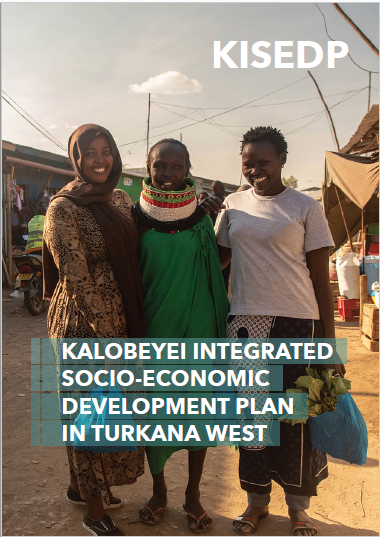Such a vision includes social, environmental and economic sustainability outcomes to be agreed upon considering the current context, and the desired future for the specific landscape, in order to contribute to ecosystem and livelihood resilience of refugees and host communities.
Define social outcomes to address the multiple interests and needs of multiple stakeholders and those of hosting and displaced communities
- Through inclusive participatory approaches for co-design, envisaged social outcomes are determined and priorities and opportunities identified.
Define outcomes for landscape environmental sustainability
- Environmental outcomes follow mapping and ecosystem assessments of environmental risks and vulnerability to climate change, livelihood systems and drivers of deforestation and landscape degradation using various approaches including circular economy approaches and spatial planning.
Economic outcomes promote self-reliance of refugees and host communities
- Economic outcomes are targeted following analysis of production systems, credit mechanisms, market systems and value chains.
- Plan and promote nature-based enterprises.
Towards a common vision for the refugee hosting Garoua Boulaï and nearby councils’ landscape, Cameroon
In Eastern Cameroon, 304,000 refugees from the Central African Republic now live within organized settlements (30%) and within host communities (70%), with over 60,000 people settled in Gado-Badzéré village in Garoua Boulaï; the nearby councils’ area. Refugees in these locations have limited livelihood options. For their daily cooking and heating needs, fuelwood is the most available resource, while collecting and selling fuelwood also provides cash income. As refugees generally have limited access to land, fuelwood collection is a source of conflict with local communities. It is also unsustainable, as evidenced by the increasing distances that refugees and hosting communities must travel to collect fuelwood.
A landscape approach addressing woodfuel issues by CIFOR-ICRAF (under the EU-financed GML project) was started by a workshop with key stakeholders in Bertoua in 2019 to create consensus on priorities for the scoping study. These stakeholders were subsequently involved at all steps of the initiative to ensure efficiency in the options developed for the benefit of host communities and refugees, as well as to establish a framework for sustainable management of the woodfuel value chain in a refugee hosting area. The co-development of a sustainable woodfuel management strategy was built on existing initiatives within the refugee hosting landscape and collaborations between stakeholders. It was an opportunity for open and constructive discussions between stakeholders to identify knowledge gaps about woodfuel value chains and, subsequently, to test various options. These consisted of a package of activities, including reforestation of the landscape using fast-growing tree species and trees that provide non-timber forest products (NTFPs) and commercial fruits, as well as better end use of woodfuel using improved cookstoves. Long-term follow up and participatory monitoring evaluation and learning are essential to supporting and assessing the environmental and socioeconomic outcomes of reforestation activities and improved cookstove adoption, to inform and adapt activities to achieve best sustainability outcomes.
Source: Ndzodo A, Awono A, Schure J, Beloune Biondokin GS, Sola P, Gambo J. 2022. Guidance for a Landscape Approach in Displacement Settings (GLADS): Cameroon Case Study. Bogor, Indonesia; Nairobi: CIFOR-ICRAF.












